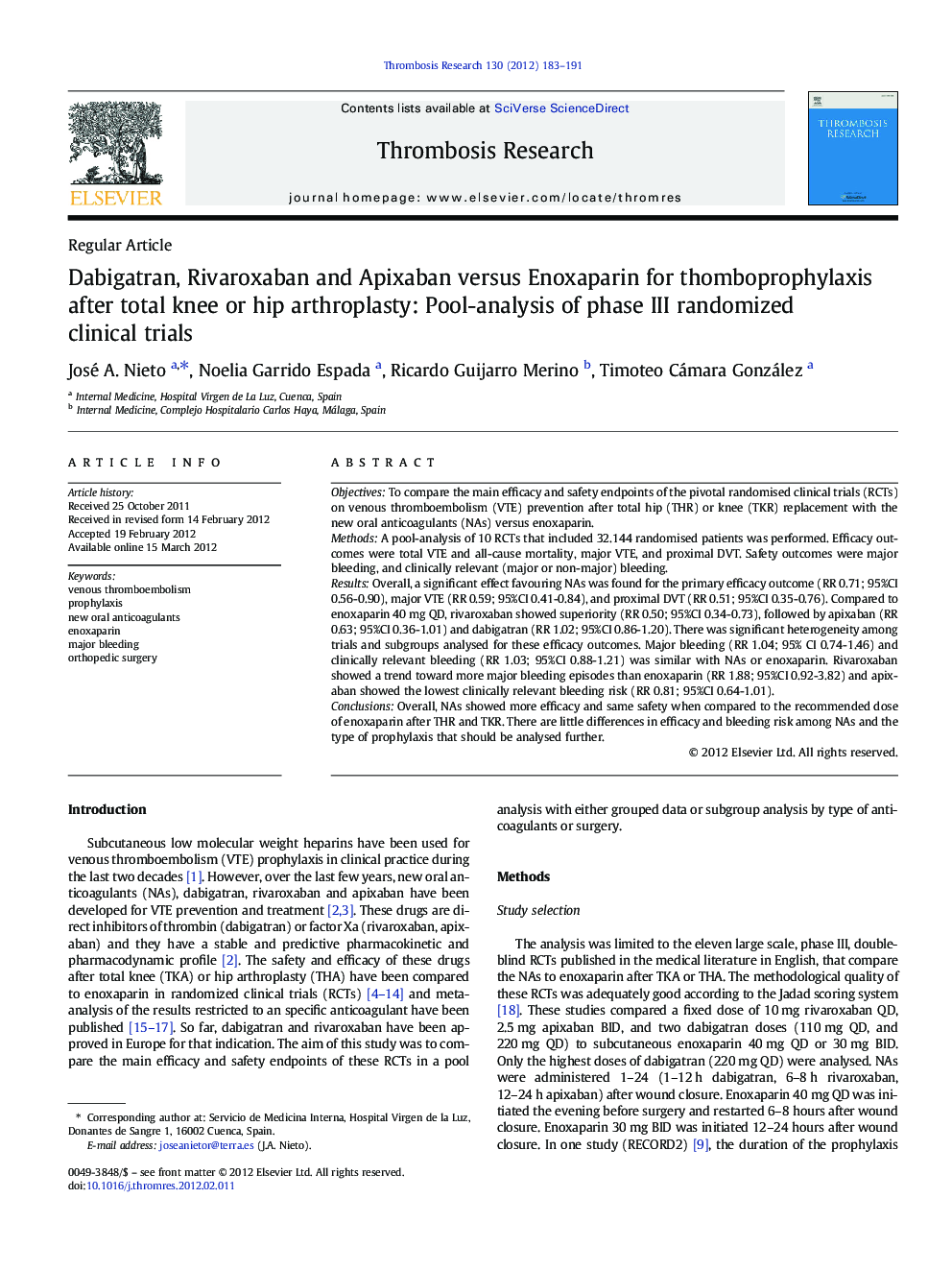| Article ID | Journal | Published Year | Pages | File Type |
|---|---|---|---|---|
| 6003459 | Thrombosis Research | 2012 | 9 Pages |
ObjectivesTo compare the main efficacy and safety endpoints of the pivotal randomised clinical trials (RCTs) on venous thromboembolism (VTE) prevention after total hip (THR) or knee (TKR) replacement with the new oral anticoagulants (NAs) versus enoxaparin.MethodsA pool-analysis of 10 RCTs that included 32.144 randomised patients was performed. Efficacy outcomes were total VTE and all-cause mortality, major VTE, and proximal DVT. Safety outcomes were major bleeding, and clinically relevant (major or non-major) bleeding.ResultsOverall, a significant effect favouring NAs was found for the primary efficacy outcome (RR 0.71; 95%CI 0.56-0.90), major VTE (RR 0.59; 95%CI 0.41-0.84), and proximal DVT (RR 0.51; 95%CI 0.35-0.76). Compared to enoxaparin 40Â mg QD, rivaroxaban showed superiority (RR 0.50; 95%CI 0.34-0.73), followed by apixaban (RR 0.63; 95%CI 0.36-1.01) and dabigatran (RR 1.02; 95%CI 0.86-1.20). There was significant heterogeneity among trials and subgroups analysed for these efficacy outcomes. Major bleeding (RR 1.04; 95% CI 0.74-1.46) and clinically relevant bleeding (RR 1.03; 95%CI 0.88-1.21) was similar with NAs or enoxaparin. Rivaroxaban showed a trend toward more major bleeding episodes than enoxaparin (RR 1.88; 95%CI 0.92-3.82) and apixaban showed the lowest clinically relevant bleeding risk (RR 0.81; 95%CI 0.64-1.01).ConclusionsOverall, NAs showed more efficacy and same safety when compared to the recommended dose of enoxaparin after THR and TKR. There are little differences in efficacy and bleeding risk among NAs and the type of prophylaxis that should be analysed further.
